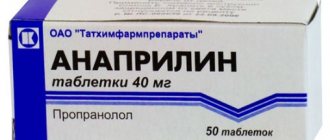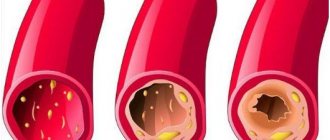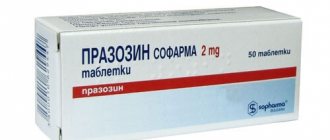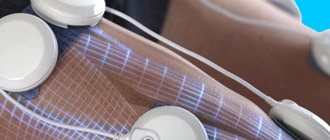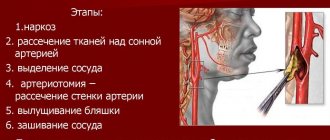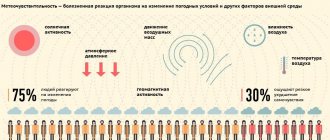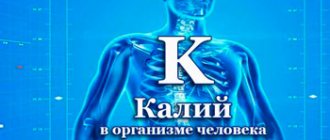Adrenaline is a natural emotional hormone that is produced by the human adrenal glands during periods of extreme stress. It increases the speed of completing tasks in unforeseen and difficult situations, increases heart rate, increases blood pressure, and speeds up reaction. The hormone is also available in solution form to stimulate the central nervous and cardiovascular systems. Most often, adrenaline in ampoules is used to suppress an immediate allergic reaction and restore heart function.
Description and purpose of the drug, mechanism of action
Epinephrine, produced by the adrenal medulla, is the main supplier of catecholamine hormones (norepinephrine, epinephrine and dopamine). It causes a quick reaction in unexpected circumstances and helps to act quickly and efficiently. It is possible to regulate its level at home by maintaining a healthy lifestyle, applying the rules of a balanced diet, rest and sleep. A constant excess of adrenaline can bring negative side effects, so it is recommended to properly suppress stress and avoid depression.
Hormone injections are required in emergency situations, as well as for surgical operations (in some cases). The international name for pharmaceutical adrenaline is epinephrine; this is the substance indicated on the packaging of ampoules. The solution is colorless and odorless, transparent. Pharmaceutical companies produce it in concentrations of 0.1 and 0.18%. The adrenaline ampoule is orange in color and has a volume of 30 milliliters.
When the substance enters the body, it stimulates tissue metabolism and increases the concentration of glucose in the blood. Along with this, epinephrine has the following types of effects:
- Bronchodilator;
- Antiallergic;
- Hypertensive (increased blood pressure);
- Constriction of blood vessels.
- In addition, adrenaline injections:
- Slow down the production of glycogen in the liver and muscle tissue;
- Accelerate the processing and elimination of sugars;
- Stimulate the production of corticotropin releasing hormone in the hypothalamus;
- Improve blood clotting;
- Suppresses the formation of lipids and improves their breakdown;
- Improves the functioning of the central nervous system;
- Increase protein catabolism;
- Improves physical and mental activity.
The main types of actions that the solution has are anti-allergic and anti-inflammatory.
As a result of immediate administration of the drug, the following effects occur:
- Constriction of blood vessels on the skin and muscles;
- Vasodilation in the brain;
- Stimulation of automatism of the heart muscle;
- Increased heart rate;
- Reducing the production of fluid inside the eyeball, reducing intraocular pressure;
- Increasing potassium levels in the body;
- Pupil dilation;
- Manifestation of reflex bradycardia;
- Relaxation of smooth muscles of internal organs of the body.
Adrenaline can be administered intravenously or subcutaneously. Good absorption of the drug is observed, its highest concentration is observed within a few minutes after use. The half-life is one to two minutes. Metabolites and small amounts of the substance are excreted unchanged through the kidneys.
What is the danger of adrenaline
The mechanism of action of a substance such as adrenaline is very specific: it forces the entire body to work in an “emergency” mode, and this is overload. Therefore, the hormone not only creates a beneficial, “rescue” effect, but can also be dangerous.
The effect of adrenaline on biochemical reactions in the body during stress is balanced by the hormone of the opposite effect - norepinephrine. Its concentration in the blood when the body’s normal functioning is restored is also high. Therefore, after suffering a shock, relief does not occur, and the person experiences emptiness, fatigue, and apathy.
When stressed, the body actually undergoes a powerful biochemical attack, recovery from which requires a long period of time. Living in a constant state of overexcitation is dangerous - it leads to serious consequences:
- depletion of adrenal medulla;
- adrenal insufficiency;
- heart attack;
- stroke;
- diseases of the cardiovascular system;
- kidney disease;
- severe depression.
This needs to be remembered by people who prefer extreme sports and entertainment of this kind, and also provoke conflicts and easily become participants in them.
Indications and areas of application
Adrenaline solutions are used in practice in hospital settings, as well as in emergency rooms. Their dispensing is possible through interhospital pharmacies and only with a doctor’s prescription. Among the main indications for the use of adrenaline injections:
- Rapidly progressing allergic reactions to chemical compounds, medications, foods, etc.;
- Anaphylactic shock;
- Bronchial asthma (single attacks);
- Extensive and heavy bleeding (if superficial vessels are damaged);
- Open angle glaucoma;
- Priapism;
- Collapse, a sharp drop in blood pressure;
- Reduced potassium levels in the body;
- A sharp drop in blood glucose levels (if the problem is caused by too much insulin);
- Swelling of the conjunctiva, observed during surgical operations on the visual apparatus;
- Left ventricular failure in acute form;
- Ventricular asystole (cardiac arrest);
- Edema of the conjunctiva;
- Ventricular fibrillation.
Adrenaline in solution is actively used during surgical operations as a means to reduce blood loss. In addition, the substance is included in some anesthetic drugs used in surgery and dentistry. At home, adrenaline in solution is not used. However, suppositories against hemorrhoids are produced with this hormone in the composition to relieve pain, inflammation and stop bleeding. In ENT practice, it is possible to use the drug for local anesthesia and vasoconstriction. Epinephrine tablets are used to treat angina, mental and central nervous system disorders, as well as arterial hypertension.
Pathogenesis
Cardiac arrest is based on shifts in the gas composition of the blood and acid-base balance towards oxidation, which leads to disruption of metabolic processes, inhibition of conductivity, changes in excitability in the heart muscle and, as a result, disruption of the contractile function of the myocardium. A wide range of pathologies, different causes and types of contributing factors form different mechanisms of cardiac arrest. The cessation of cardiac activity may be based on different types of cardiac arrest, the main of which are: cardiac asystole and ventricular fibrillation .
What is cardiac asystole? Asystole means the complete cessation of contractions of the muscles of the atria and ventricles in the genesis of which is the complete cessation of the process of transfer of excitation from the sinus node in the absence of impulses in secondary foci of automaticity. This includes:
- asystole of the entire heart with impaired/complete blockade of conduction between the sinus node and the atria;
- ventricular asystole in the presence of complete transverse block;
- pronounced ventricular bradycardia against the background of incomplete blockade of conduction between the ventricles and atria.
Asystole can occur reflexively (suddenly) with still preserved myocardial tone or gradually (with preserved myocardial tone or with its atony). Cardiac arrest most often occurs in diastole and is much less common in systole. In Fig. The ECG below shows an agonal rhythm turning into asystole .
Ventricular fibrillation is understood as an asynchronous (chaotic and scattered) contraction of the muscle fibers of the heart, leading to disruption of the function of blood supply to organs and tissues. In this case, vigorous fibrillary contractions are observed (with normal myocardial tone) or sluggish (with its atony).
The main mechanism of cessation of blood circulation in most cases (85%) is ventricular fibrillation, the development of which is facilitated by factors that reduce the electrical stability of the myocardium: decreased cardiac output, increased heart size ( aneurysm , hypertrophy , dilatation ), increased sympathetic activity.
The cause of ventricular fibrillation is disturbances in the conduction of excitation in the conduction system of the ventricles. The preliminary stages of cardiac fibrillation are:
- ventricular fibrillation and flutter;
- paroxysmal tachycardia , which is caused by impaired intraventricular/intraatrial conduction.
In Fig. Below is an ECG for large-wave and small-wave ventricular fibrillation.
There are several theories to explain the mechanisms of heart rhythm disturbances during fibrillation, the most significant of which are:
- The theory of heterotopic automatism, which is based on the appearance of numerous foci of automatism that arise as a result of “overexcitation” of the heart.
- The theory of "ring" rhythm. According to its provisions, excitation continuously circulates throughout the myocardium, which leads to contraction of individual fibers instead of simultaneous contraction of the entire muscle.
An important mechanism for the occurrence of ventricular fibrillation is the acceleration of the excitation wave. In this case, only muscle fibers contract, which by that time had left the refractory phase, which causes chaotic contraction of the myocardium.
Also, disturbances in electrolyte balance (potassium and calcium) are of great importance in the development of pathology. Under conditions of a hypoxic state, intracellular hypokalemia , which in itself increases the excitability of the heart muscle, which is fraught with the development of paroxysms of disruption of sinus rhythm. Also, against the background of intracellular hypokalemia, myocardial tone decreases.
However, cardiac activity is disrupted not only with the development of intracellular hypokalemia, but also with a change in the ratio/concentration of K+ and Ca++ cations. Such disorders lead to changes in the cell-extracellular gradient with a disorder in the processes of excitation/contraction of the myocardium. In addition, a rapid increase in plasma potassium concentration against the background of its reduced level in cells can cause fibrillation. Intracellular hypocalcemia can also contribute to the loss of the myocardium's ability to fully contract.
In general, regardless of the genesis of SCD, cardiac arrest must be based on a factor leading to the occurrence of SCD and disability of the heart muscle. The BCC formula can be presented as: BCC = substrate + trigger factor.
Where the substrate refers to anatomical/electrical abnormalities caused by heart disease, and the trigger factor refers to metabolic, mechanical and ischemic influences.
Instructions for use of the drug
Most often, injections of the substance are made directly under the skin. The practice of administering intravenously (in the form of IVs) or into a muscle is rarely used. The solution should not be injected into the artery, as this can provoke necrotic changes in soft tissues and gangrene. The dosage is determined by the emergency physician or attending physician depending on the goals. A single dose can be from 0.2 to 1 milliliter for an adult patient, and for a child – from 0.1 to 0.5 milliliters.
Restoration of heart function is carried out by intracardiac administration in a volume of 1 milliliter, in case of fibrillation - from 0.5 to 1 milliliter of solution. An asthma attack is stopped by subcutaneous injection of 0.3-0.7 milliliters of epinephrine. The maximum permissible dosage is a milliliter for an adult and half a milliliter for a child. Therapeutic doses:
- Children – from 0.1 to 0.5;
- Adults - from 0.2 to 1 milliliter.
These restrictions apply to all types of drug administration, regardless of the intended purpose of treatment. It is prohibited to give injections at home. Self-medication using any form of adrenaline is strictly not recommended.
When administered, the drug immediately begins to interact with body tissues, resulting in the following reactions:
- Increased heart rate;
- Increased breathing;
- Rapid increase in blood pressure.
Based on these factors, you can determine the effectiveness of the dosage used and the drug itself.
Sudden cardiac arrest on the street: what to do before the ambulance arrives?
Ensuring airway patency - tilt the patient's head back, push the lower jaw forward and open the mouth. Oxygen supply using a breathing bag. Indirect massage in almost continuous mode. It has been established that chest movements are sufficient to supply air, and a pause impairs blood supply to the brain.
In the absence of signs of contraction, defibrillation is used in the case of ventricular fibrillation. It provides an electrical shock to temporarily stop the heart. This restarts it, after which the physiological rhythm is restored. With asystole, the method is ineffective.
If there is a need to administer drugs, the intravenous route is used.
The injection is carried out into any accessible peripheral vein, which is closest to the heart - jugular, ulnar. If the patient has an endotracheal tube, the drug is infused through it after aspiration of the mucus.
Contraindications and possible limitations
Epinephrine preparations are practically not used during pregnancy and breastfeeding. This medication can cause miscarriage at almost any time. In addition, it is transmitted to the fetus through milk and placenta. Also among the contraindications of adrenaline solutions are:
- Hypertrophic obstructive cardiomyopathy;
- Constantly elevated blood pressure requiring medication correction (arterial hypertension);
- Atherosclerosis and other vascular diseases;
- Thyrotoxicosis;
- Arrhythmia;
- Aneurysm;
- Hypersensitivity to epinephrine.
The use of a solution of adrenaline with chloroform, fluorotane and cyclopropane in surgical practice is not recommended due to the high risks of pathological changes in heart rhythm. In pediatrics, the use of the drug is practiced, but it is associated with some risks, therefore, in cases of treatment of children, special monitoring of its results is required.
Negative Side Effects
Negative effects are possible from the central nervous, digestive, cardiovascular and urinary systems. Rarely, when administering epinephrine solution, the following are possible:
Pathological increase in heart rate, angina pectoris;
- Jumps in blood pressure (possibly both a decrease and an increase);
- The occurrence of pain during urination (as a rule, this effect occurs with the development of prostate diseases);
- Allergic reactions (with hypersensitivity to epinephrine);
- Dizziness and migraines;
- Disorders of the nervous system and motor skills (panic attacks, disorientation, paranoia, sleep disturbance);
- Angioedema, skin rash;
- Increased sweat production;
- Unpleasant and painful sensations in the area of injections or IVs, burning and stinging;
- Nausea and vomiting;
- Chest pain in the region of the heart;
- Low potassium levels.
If the prescribed dosages are exceeded, the following reactions are possible:
- Mydriasis (sustained dilation of the pupil);
- Restlessness and anxiety;
- Blood pressure is higher than normal;
- Fibrillation;
- Tachycardia;
- Tremor;
- Nausea and vomiting;
- Heart attack;
- Acute renal failure;
- Pulmonary edema;
- Brain lesions;
- Metabolic acidosis;
- Dizziness and migraine.
A fatal outcome is likely if the established dosage is exceeded by 10 milliliters at a substance concentration of 0.18%. To neutralize the component in the body, adrenergic blockers are used.
Drug interactions
The simultaneous use of drugs is not recommended due to the high likelihood of developing arrhythmia. In particular, the following drugs are limited when using adrenaline:
- Cardiac glycosides;
- Antidepressants;
- Quinidine;
- Dopamine.
The use of injections with sympathomimetics increases the likelihood of side effects. Diuretics and antihypertensive medications weaken the effect of adrenaline.
Epinephrine must not be mixed with acids, alkalis and oxidizing agents. The optimal condition for storing adrenaline in ampoules is about 15 degrees Celsius, but if possible it is recommended to store it in the refrigerator. Shelf life without opening the package is two years. If the epinephrine solution in the ampoule has acquired a brown tint, it is not recommended to use it.
Why is the method no longer used?
If earlier Adrenaline for injection into the heart cavity was recommended as the most effective method, then with deeper study it began to be widely abandoned. This is due to the lack of efficiency and great danger of such technology. Possible complications:
- Penetration of medications into cavities - pleural, cardiac sac, mediastinum or myocardium. Calcium chloride can cause tissue death.
- If the needle gets into the sinus node, then it is impossible to restore contractions due to the destruction of the pacemaker cells.
- If the needle is not inserted sufficiently into the contracting heart, the myocardium is injured.
- With repeated injections through the holes, bleeding may begin during intense cardiac massage.
- Puncture of the lung causing pneumothorax.
- Damage to blood vessels between the ribs, thoracic or pulmonary arteries, aorta, coronary branches.
The administration of Adrenaline can also activate the function of the parasympathetic part of the nervous system, which has an inhibitory effect on cardiac activity, and its negative effect is rhythm disturbance.
Sources used in the article:
- https://medside.ru/ostanovka-serdtsa
- https://CardioBook.ru/ukol-v-serdce/
- https://Ukol.expert/vidyi/dlya-serdtsa
- https://nowifi.ru/pervaya-pomosch/okazanie-pomoschi/71-pervaya-pomosch-pri-ostanovke-serdca.html
- https://kermi1.ru/kuda-kolot-adrenalin/
- https://athletic-store.ru/gormony/adrenalin-pri-ostanovke-serdcza
Cost of the drug
As a rule, medical institutions independently purchase batches of injection solutions. However, patients are also allowed to purchase the medication if they have a prescription. The cost of packaging ampoules is about 70-100 rubles or more. Most of the special medicines containing adrenaline are also available with a prescription or prescription from a doctor.

